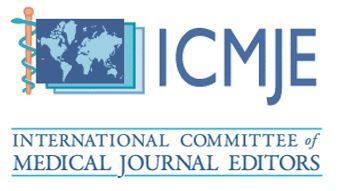Smoking prevalence, knowledge and attitudes among medical students in Dhaka, Bangladesh
DOI:
https://doi.org/10.51200/bjms.v10i1.571Keywords:
smoking, adolescents, prevalence, knowledge, attitudeAbstract
Cigarette smoking is considered as the symbol of adulthood and as a friend during stress and loneliness. The developing countries in South Asia where the largest segment of the population is comprised of adolescents are more susceptible to smoking epidemic and its consequences. A cross sectional survey among 304 randomly selected medical students was carried out to determine their smoking habit of a selected medical college in Dhaka, from 1st October to 31st December 2014. The respondents were from 16 to 20 years of age, with mean (±SD) of 16.8 (±1.9) years. Among them (including 28 girl students), 96(31.5%) were non-smokers. The remaining 208(68.4%) were smokers, among them 43(20.6%) were regular smokers, and 165(79.3%) were occasional smokers. All 28 female students were non-smokers. Regarding duration of smoking, 42(20.2%) respondents smoked for less than 6 months, 64(30.8%) for 6 months to 1 year, 88(42.3%) for 1 to 4 years, 11(5.3%) for 5 to 10 years and a least 3(1.4%) smoked for more than 10 years. Thirty six percent of current smokers smoked more than 10 sticks per day compared with thirty percent who smoked 6 to 10 a day. Significantly more users knew that it causes tuberculosis, heart attack, cancer and development of hypertension. Overall, students’ major sources of information were doctors (69.7%), medias (47.7%), parents (9.2%) and friends (3.3%). As the prevalence of smoking among medical students was found very high hence, the multi-pronged intervention strategy is needed to tackle the problem. Anti-tobacco education and awareness should be adopted in the curriculum of schools and colleges. All forms of tobacco advertising and promotional activities should be banned, and parents should be encouraged to adopt more responsible attitudes toward smoking in the homeDownloads
Published
2016-12-09
How to Cite
Karim, M., Farah, S., & Parash, T. H. (2016). Smoking prevalence, knowledge and attitudes among medical students in Dhaka, Bangladesh. Borneo Journal of Medical Sciences (BJMS), 10(1). https://doi.org/10.51200/bjms.v10i1.571
Issue
Section
Articles
License
The copyright of the article belongs to the authors, who retain ownership of their work published in the journal. Their work is distributed under the CC BY-NC 4.0 license








1.png)




